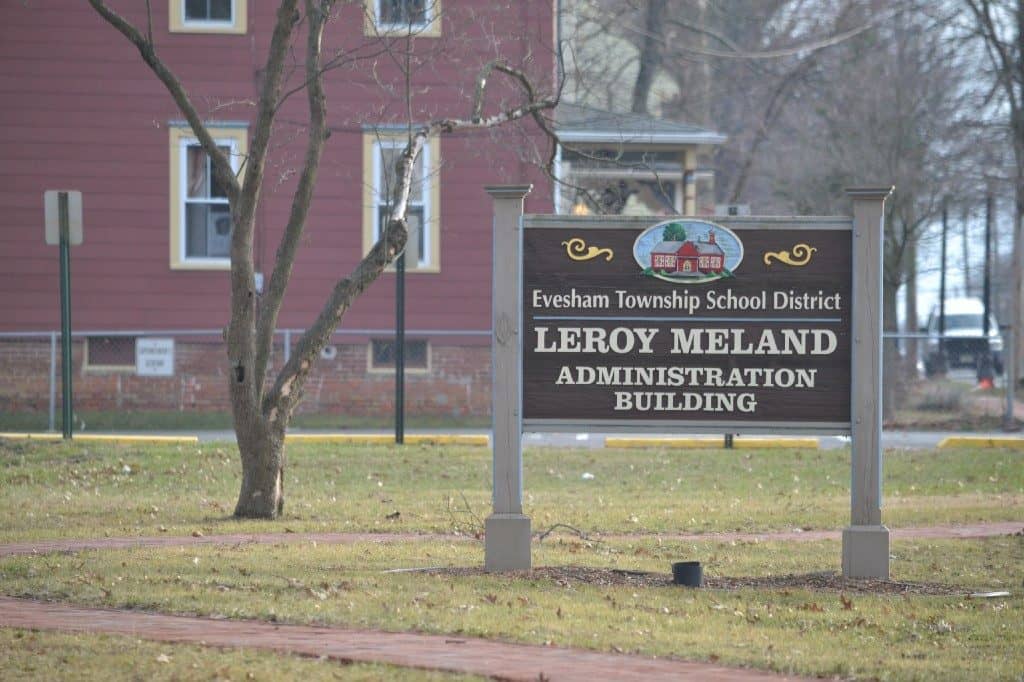
Evesham homes assessed at the average value of $272,700 would see an increase in their ETSD taxes by $26.89.

This week’s Evesham Township Board of Education meeting saw the board review preliminary information for the 2019–2020 school year budget.
Total appropriations for the preliminary budget were set at $78.6 million.
The budget does not feature any planned cuts to staff or programs, and class sizes would also be maintained at their current levels.
As such, the preliminary budget features a .99-cent tax rate increase per every $100 of assessed property value.
With the proposed increase coming in at just under one penny, Evesham homes assessed at the average value of $272,700 would see an increase in their ETSD taxes of $26.89
These figures equate to a 2.79 percent increase in the district’s overall tax levy from last year, or a jump from the total 2018 ETSD tax rate of $1.1782 per every $100 of assessed property value to the proposed 2019 tax-rate total of $1.1881 per every $100 of assessed property value.
According to Superintendent John Scavelli Jr., this year’s budget is once again impacted by cuts to state-aid monies announced by Gov. Murphy and legislators last year due to the implementation of provisions in the School Funding Reform Act from 2008.
From 2008 through last year, school districts in New Jersey were held harmless if the funding formula set forth by the SFRA dictated a district should lose funding.
However, with provisions from the act enacted last year, the ETSD and other districts in the state determined to be “overfunded” lost state aid monies and are scheduled to continue to lose money in the coming years.
The ETSD originally expected to receive state aid in the amount of about $14 million last year, but under the new formula, the district received only about $13.2 million.
That figure has dropped once again this year, with this year’s state aid projected at $12.6 million.
However, Scavelli noted official state aid figures for the year will not be known until early March following Murphy’s annual budget address.
According to Scavelli, the SFRA formula for determining state aid is driven by changes in student enrollment, changes in municipal property wealth (rateables) and changes to the personal wealth of the individuals living in the municipality where a district is located.
Scavelli noted that since 2008, enrollment in the ETSD has decreased, while at the time, municipal property wealth has increased and personal individual wealth increased as well.
According to Scavelli, the district is predicted to continue losing state aid through the 2024–2025 school year, at which point the district will have lost an estimated $9 million in state aid.
However, Scavelli said that $9 million figure could and most likely would change slightly, as the district and township continue to evolve in future years.
Looking forward to this year’s budget and future budgets, Scavelli noted priorities and goals are similar to previous years, with the district looking to maintain all instructional programs, maintain current class sizes, continually update technology and balance the district’s needs with respect to the tax levy.
In respect to dealing with the loss of state aid money, Scavelli said the district would reduce spending on supplies, non-instructional equipment and capital projects.
Specifically, Scavelli said the district was not investing any funds into capital projects in this budget, down from about the $500,000 spent in the district’s 2018–2019 budget.
With that, Scavelli warned that while that would save the district money in the near future, if the district were to continue to regularly avoid capital projects, the district could reach a point someday where numerous costly projects would be needed at the same time, which would require a bond referendum to finance.
Scavelli said the district would also continue to explore ways to deliver services “effectively in ways that cost less money.”
Scavelli noted total appropriations for the preliminary 2019–2020 budget are already .08 percent less than the district’s revised budget from July of last year when the board was first forced to deal with the recent cuts to state aid.
According to Scavelli, the 2019–2020 tax levy increase for the average homeowner of $26.89 was also below the district’s past average of about $52 per average homeowner per year.
Scavelli also noted the district’s debt service fund for the 2019–2020 budget was reduced from the 2018–2019 figure of $3.3 million to about $1.4 million for the final two years of payment, which Scavelli said would help the district keep costs lower.
Scavelli said the district would also continue to work toward reducing the total budget and tax levy even further from now through when the board adopts a tentative budget in March and a final budget in May.
“I would anticipate, based on past history, that it will come down a little bit in the next few months,” Scavelli said. “Not significantly, but a little bit.”









